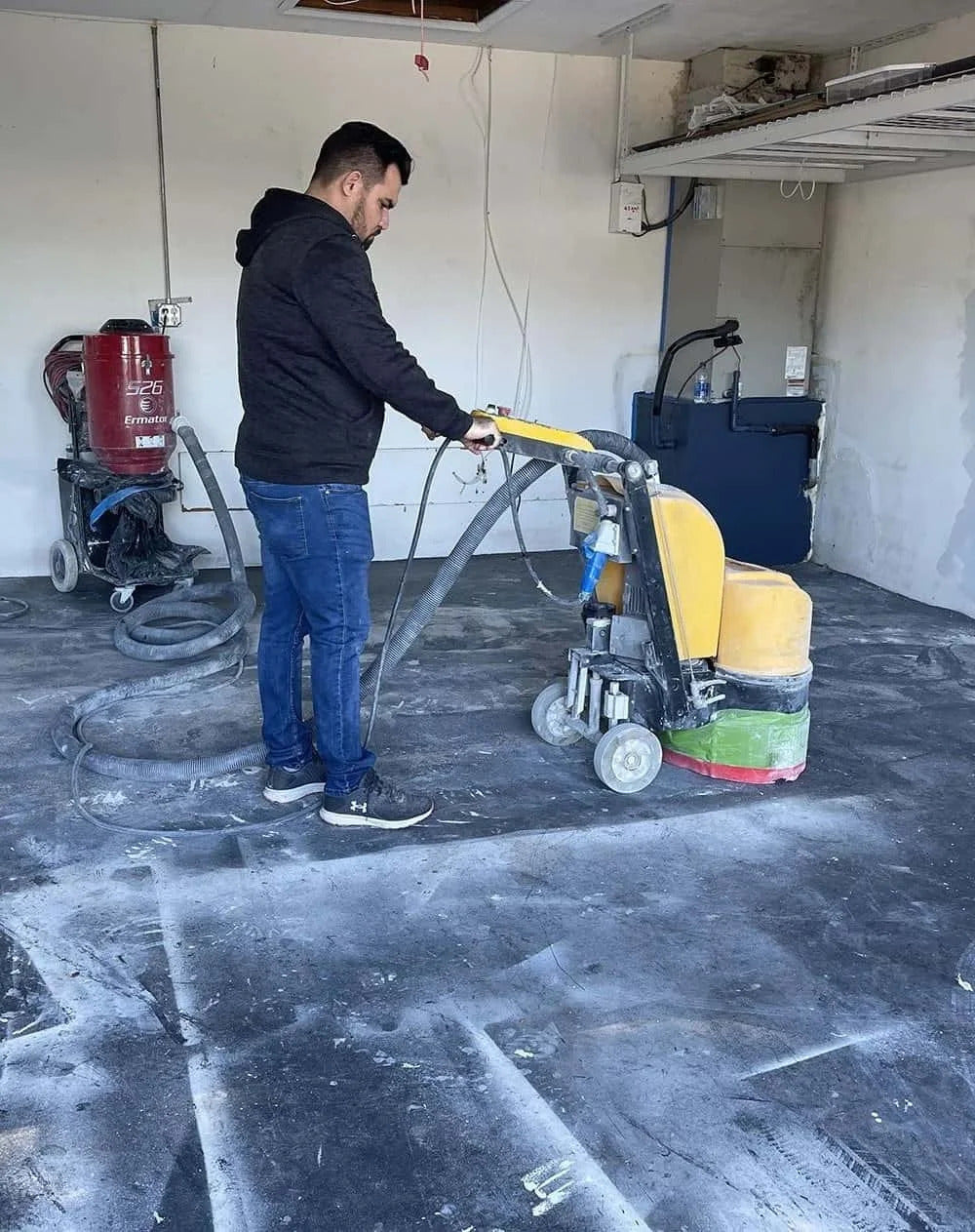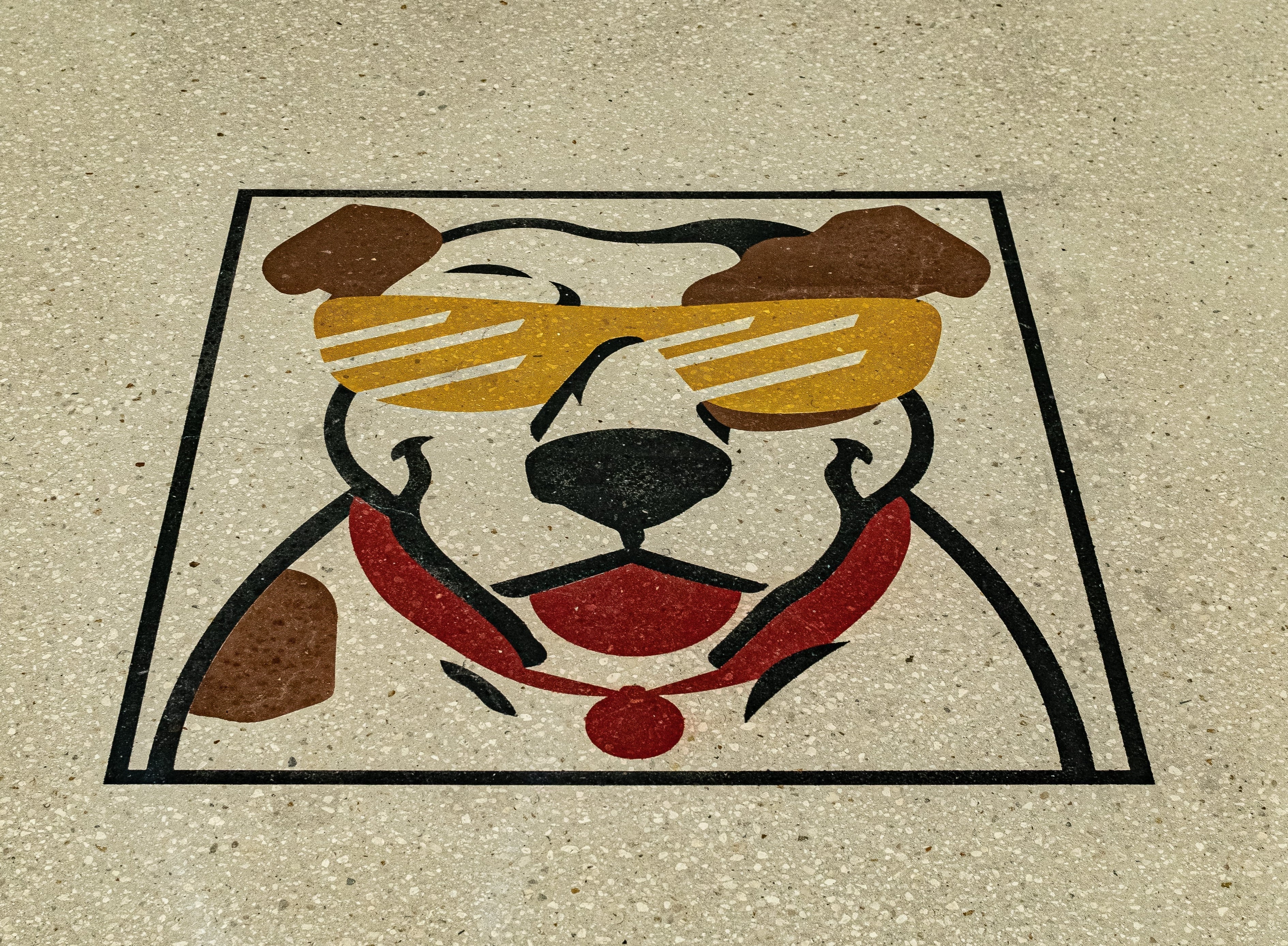
Concrete Grinder Buying Guide 2022
As a construction professional, or as a concrete worker, having the proper concrete grinder on the job is a make-or-break decision. Before discussing which floor grinder is the right one for you, we first need to discuss what grinders are and the differences between them.
First, you should know what the basic function of a concrete grinder is to better inform your purchasing options. Concrete grinders contain horizontally rotating disks that are specialized for profiling, leveling, cleaning, and polishing concrete. These machines perform a multitude of tasks including the removal of existing epoxy or paint floor coating, as well as light surface texturing and surface preparation for fresh epoxy installation.
Types of Grinders
Now that you understand what a concrete grinder’s function is on the job, the next step is being informed on which type of grinder is right for your specific on-site application. There are three main types of concrete grinders:
- Walk-Behind
- Counter-rotating
- Planetary
- Handheld
- Ride-On
Walk-Behind Concrete Grinders
For large-scale scenarios, typically industrial settings, a walk-behind grinder is the essential choice. Walk-behind grinders range in size from single-disc to dual, triple, or four-disc machines. A single-disc floor grinder will cover roughly 10-12 inches in a single pass; a four-disc grinder will cover 32-34 inches in a single pass. This diversity in pass width allows for a walk-behind grinder to be adapted to fit any scenario just by changing the number of discs.
On units with more than one grinding disc, the discs counter-rotate to provide unmatched balance so the machine will not pull from side to side. The reason the discs are designed this way is to enhance the smoothness and uniformity in your finish. For an even better finish, and easier application, some walk-behinds are even equipped with floating heads that will follow the contours of the floor to prevent uneven grinding.
Walk-behind grinding solutions offer several benefits when it comes to employee safety, scuh as the ability to stand, versus the constant kneeling of a handheld, and keeping your operator out of the way of harmful silica dust. Handheld operators, because of their machine, must work on their hands and knees, putting them into an unnatural position for an extended period of time. These operators, compared to those working with a walk-behind grinder, are potentially being exposed to greater levels of harmful resurfacing dust on the job as well. Operator safety and health is an important factor that must be taken into consideration when deciding for or against any concrete grinding solution.
Browse our selection of walk behind concrete grinders and polishers HERE.
Handheld Concrete Grinders
Handheld machines are a strong alternative to walk-behind grinders whenever the job does not require exhaustive grinding work. These machines are perfect for small sized projects and spaces. Because handheld grinders are the most practical solution for hard to reach spaces like corners, they make for a perfect and complementary addition to walk-behind grinders on site as well. Their adaptability and mobility makes a quality handheld grinder an essential tool in any concrete professional’s kit.
One aspect surrounding handheld grinding to be aware of is the lack of consistent weight. When compared to walk-behind grinding solutions, handheld grinders can be susceptible to fluctuations in operator pressure which lead to variations in grinding consistency. Additionally, handheld grinding solutions are less compatible with most common dust prevention systems. Walk-behind systems are able to connect more often with common dust prevention systems to eliminate unhealthy airborne particles originated by the grinding process.
Shop our inventory of handheld concrete grinders HERE.
Ride On Concrete Grinders
In much the same way that walk-behind grinders are a step above handheld grinders, ride-on grinding solutions offer yet another level of increased efficiency. These machines are designed and can be used to save on labor time and cost because of the incredible efficiency that they provide. Ride-on grinders’ robust gearing system allows for high torque, low RPM and low torque, high RPM applications to be done through one machine. Ride-on grinders’ gear and belt-driven system with automatic pressure adjustments allow for the motor to be centered for the perfect weight distribution. The grinder’s 6-heads deliver extremely efficient production rates.
Our Most Popular Ride on Grinder is the iBot Mammoth 8-head Floor Grinder
Why Are Concrete Grinders Useful?
These machines are all specially designed to attack different aspects of the concrete grinding process. In a perfect tool kit, all of these grinders could be employed in specific instances to fulfill their essential roles on-site. From machines designed to tackle the largest of industrial applications, to those designed for the most intricate of spaces, these grinders will fit any job's needs. Knowing which machine to use, when to use it, and how best to maximize its efficiency is just as important as buying the right machine.
Conclusion
In any concrete worker’s toolkit, a concrete grinder of any kind is a necessary piece of equipment. These machines are built to be incredibly powerful, efficient, and reliable, and they do exactly that. They transform any ordinary contractor into a professional that can tackle 100,000 sq. ft. jobs with ease, resulting in a professional-grade finished product. If you have any additional questions, call (954)-799-6359 to speak with a specialist about which grinding solution is best for you.




